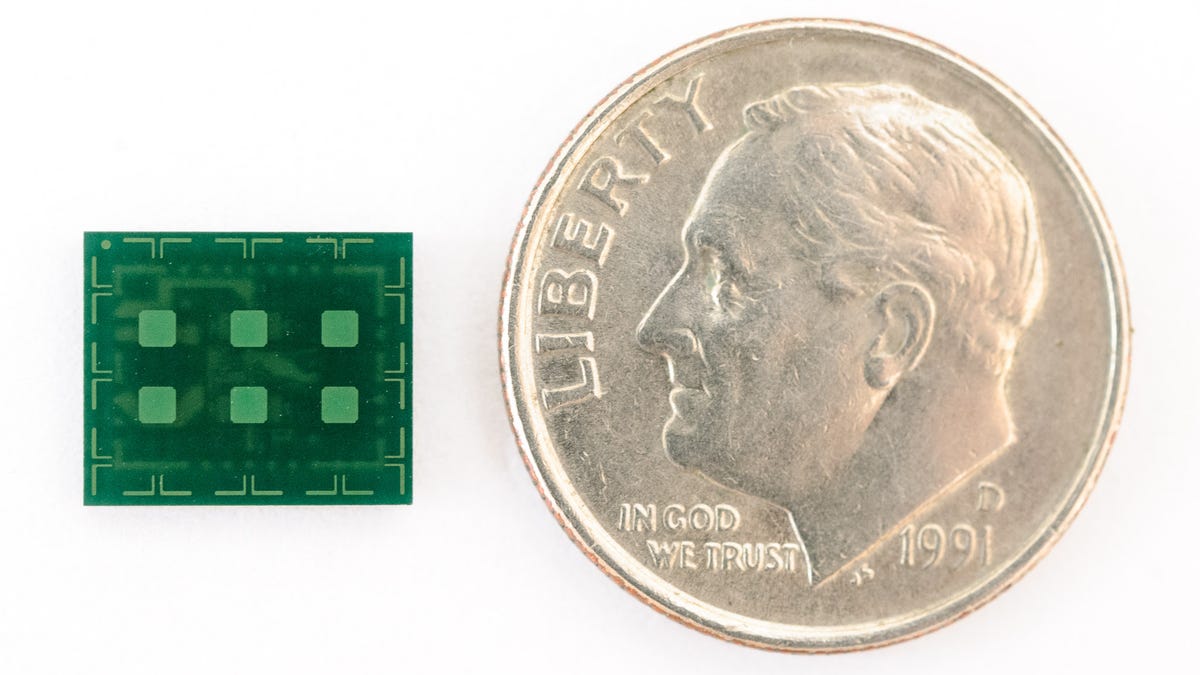Wilocity: 2015 phones getting extra-fast 802.11ad networking
The new network standard, which can reach 5Gbps but has limited range, could ease wireless congestion problems in crowded areas, according to an 802.11ad chipmaker.

BARCELONA -- The newest, highest-speed incarnation of Wi-Fi networking, 802.11ad, is coming to mobile phones.
Wilocity announced Sunday it will show a prototype phone at Mobile World Congress that, with the company's wireless networking chips, can use the 5Gbps wireless communication links. The company's upcoming Sparrow chipset for phones will join existing chips that can be used in laptops and tablets, said Mark Grodzinsky, the company's vice president of marketing.
"Phone makers will be integrating it into phones in the second half of 2014," Grodzinsky said. "You'll see the first phones in the first half of 2015." The company will send samples of its chipset to phone makers in the third quarter of 2014, Grodzinsky said.
The 802.11ad network technology, also called WiGig, uses the 60GHz radio frequency band, a much higher range than the 2.4GHz and 5GHz spectrum used by today's 802.11g, 802.11n, and 802.11ac networking. The technology transfers data faster -- but at the expense of range, since even air absorbs the radio signal energy.
That means 802.11ad signals aren't likely to penetrate walls, much less stretch from one side of the house to another. But that apparent shortcoming actually is also an advantage, Grodzinsky argued.
That's because of how 802.11ad works. It finds reflective paths in an environment that naturally link a device with a Wi-Fi router. These beams are very directional, which means that the communications with one device doesn't interfere with the communications with another device. That means that phones will be able to more reliably connect to the Net in crowded areas like technology conferences, airports, or school campuses.
On top of that, the radio signals don't escape house walls, which means less interference from neighbors' Wi-Fi.
"The real value here is when you have 100 people in a room, everybody gets the speed they're supposed to get, rather than dividing the speed by 100," Grodzinsky said.
Of course, 802.11ad won't work if you're too far away from the the router. In that circumstance, communications can fall back to 802.11n or 802.11ac, he said.
"It'll always be part of a tri-band solution, not a replacement," Grodzinsky said. "When it's not able to use 60GHz, it'll seamlessly scale down to a legacy rate."
And it won't work if you don't have a router that supports it. Many people have yet to upgrade home network gear to 802.11n, much less 802.11ac or 802.11ad.
Even if your home router does, home broadband connections -- even ones at 50Mbps or so that are fast by today's standards -- can't come close to approaching 802.11ad's speeds. That doesn't trouble Grodzinsky, though.
For one thing, network speeds are gradually edging upward -- see Google Fiber's planned expansion of its 1Gbps service to nine new US cities, for example.
For another, Grodzinsky thinks storage-enabled home network equipment will shoulder some of the data-transfer load by acting as a smart buffer in between a device and the Internet. When a person is backing up mobile phone photos, for example, the phone could send them to the router immediately, then the router could transfer them to the a cloud storage system over the slower broadband connection. Network equipment could also work the other way, anticipating files, songs, video, or other content a person might want and caching it locally.
Wilocity's mobile-phone chip consumes less than 500 milliwatts when operating and less than 1 milliwatt when idle, Grodzinsky said. Above that, device makers would shun it as taking too big a toll on battery usage.
The IEEE has standardized the 802.11ad specification, but the Wi-Fi Alliance isn't yet finished with its certification program. It has conducted five "plugfests" in which different component makers test to make sure their devices all work together, Grodzinsky said, but since Wilocity so far is the only 802.11ad chipmaker, interoperability isn't a big deal for now.

